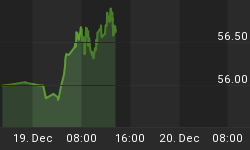The U.S. Dollar fell to a 15-month low against a basket of currencies on Tuesday as concerns about debt issues in Dubai subsided, leading to increased demand for higher yielding currencies. Further weakness in the Dollar was attributed to a report that Chinese manufacturing increased at its fastest pace in five years.
The weakness in the Dollar helped boost commodity and stock demand as investors once again felt comfortable adding more risk to their portfolios.
Support for the U.S. Dollar continued to erode all day triggering a collapse in the Dollar Index to near last week's low at 74.27. A breakthrough this level sets up a further decline to 73.67 which would match the April 2008 bottom.
News that Chinese manufacturing rose to a seasonally adjusted level of 55.7 helped drive the EUR USD over $1.51. Later this week, traders expect the European Central Bank to leave interest rates unchanged, but offer plans to gradually decrease its financial stimulus package.
The GBP USD rose sharply as U.K. manufacturing increased slightly. Technically, this market rallied back into a retracement zone at 1.6574 to 1.6646. This market may use this current retracement as an opportunity to form a secondary lower top. Yesterday's drop in consumer confidence and rising unemployment are still major concerns for the bulls.
The USD JPY rose after the Bank of Japan took action to weaken its currency. The BoJ voted earlier this morning to leave interest rates unchanged while deciding to provide three-month loans to commercial banks at an interest rate of 0.10 percent. This action by the BoJ is expected to help stimulate growth and prevent deflation.
News that Russia will add the Canadian Dollar to its Forex reserves, along with higher equity and commodity markets, helped to pressure the USD CAD. Demand for higher yielding assets should continue to strengthen in the Canadian Dollar. The chart pattern suggests more downside action to follow now that the .618 retracement level at 1.0459 and a pair of old bottoms at 1.0449 and 1.0416 have been broken. The only thing that could stop the rise in the Canadian Dollar will be action by the Bank of Canada to provide liquidity to the market. The BoC is concerned that a rising currency will hurt export demand.
The Reserve Bank of Australia raised its benchmark interest rate by 25 basis points to 3.75 overnight as expected. The RBA also added in its statement that its tight monetary policy should help to curb inflation. This news helped to limited gains in the AUD USD as traders believe it sends a signal that interest rate hikes may level off. Stronger demand for higher yielding assets was the main reason for the rise in the Aussie. The key price to watch is .9322. A break through this level turns the main trend up. The inability to follow-through to the upside could trigger a break back to .9108.
The NZD USD posted a strong gain on Tuesday. Demand for higher yielding assets and oversold technical conditions were the main forces driving this currency higher today. The chart pattern suggests that the way of least resistance is up following a nine-day slide. The first objective of .7272 was reached earlier this morning. The next upside target is .7332. A lack of follow-through to the upside could trigger a break back to .7157.















